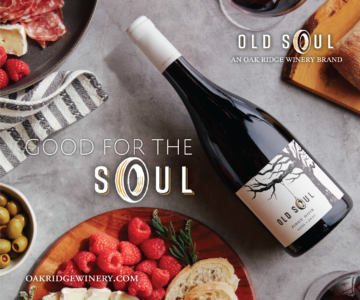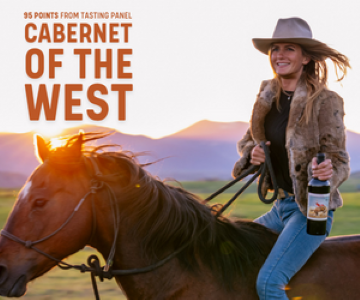This series highlights hospitality professionals who are responding to the industry crisis caused by the coronavirus pandemic in particularly creative, conscientious ways.
Shared food, convivial mood: Spanish tapas bars represent the ultimate in social dining. What happens to them in the age of social distancing? For insight, I spoke with Gretchen Thomas, VP of Food & Beverage Innovations for Barcelona Wine Bar.
Ruth Tobias: Based in Westport, Connecticut, Barcelona Wine Bar encompasses 18 locations in ten states. That makes for a dizzying amount of pivoting. Can you walk us through the past couple of months?
Gretchen Thomas: It’s been a roller coaster of work hours and emotions and hope and hopelessness, all in a few weeks. Something that’s interesting about this company is that we have had our foot on the gas pedal for the past five years. [Through] private-equity ownership, we were bought and sold and bought again; we moved to Texas, we moved back to Connecticut. There’s been rapid growth. I thought, what could be harder than opening restaurant after restaurant after restaurant? [Laughs.]
But once we got to this crazy moment, we felt like in some ways we were trained for it: “Here’s where we put our hats on, our boots on, and we just go.” We’re comfortable with the [fast] pace and the stress. Not that we had experience with a pandemic; having to lay off 1,200 employees that we care deeply about hurt a lot. And we were worried about how they were going to respond: Are they just going to give up on us? But so many of them have been so understanding. We’re in touch with them as much as we can be. Man, we just want them back!
I also have to say, takeout was just not in our model. Our restaurants are very much about an entertaining social experience that doesn’t really translate to takeout, so we didn’t focus on it; we didn’t think it was a revenue stream we needed to perfect. And now it’s a revenue stream we need to perfect. [Laughs.]
So all of our locations are doing takeout. We are in Georgia, which has reopened, but we haven’t opened our dining rooms yet—we’re still ironing out our operational plan for that. We set up an online takeout system, and we have about four to six people in each restaurant dealing with the takeout business. That’s a long, hard day for them. We had to let go of a lot of our third-party suppliers, so our [teams] are doing all the cleaning, even doing our landscaping—it’s a lot of work, and we’re just listening to them, having multiple meetings a week to hear how things are going and what hurdles they’re experiencing.
At our support center, our office, we’ve been able to keep just about everyone there, but it’s a small team—there are only five of us. So we can’t lose anybody. We are purchasing, we’re beverage, we’re culinary, and we’re marketing—and whatever we were working on before, we dropped it, and now we’re working on takeout. Our head of purchasing, for instance, she’s just been ensuring that our supply chain is keeping up as best we can. If we run out of packaging materials, she’s got to find a new source; she’s figuring out what can do to help the farmers [we work with]. Every day brings a new challenge.
RT: What are those challenges with respect to the beverage program?
GT: I’ve been with the company as beverage director for 14 years; my title changed as of September last year. So before that, beverage was my entire world; I’ve been developing the program for a long time‚ writing the wine list, creating the cocktails, beer, the whole thing. We used to be involved with Del Frisco’s and Bartaco, so I had a team working with me, but we’re now an indie brand, and Emily Nevin-Giannini works with me as beverage director. For the 18 restaurants, the whole program is decided by her and me. We don’t have the kind of money a steakhouse has, so we do the creative and we have to hire strong managers that can do a multitude of things from an operational perspective.
Pre-pandemic, Emily and I were on the road a lot, teaching substantial training courses [to staff] and meeting with local wholesalers. We work with small importers, which means ours is a very hard beverage program to maintain; there are more challenges with availability. But we’re so proud of our lists, so that’s how we prefer to work—the hard way [laughs]. Now we haven’t been on the road for a couple of months, so training is virtual, but even before this, our beverage managers would do a lot of their own training in house as well. They’re really motivated and passionate people, and we give them a lot of freedom and flexibility to train how they need to.
The first thing we decided to do with wine, especially as states started to allow alcohol takeout, is put all of our wines at 50% of the menu price. That way we wouldn’t have to reprogram the POS system; we have one IT guy, and we felt like repricing 400 items in ten different states was gonna make his head explode. We also felt like it made sense from a marketing perspective; half-off is easy to translate to the guests, getting you pretty close to a normal retail price if not better, which makes everyone happy. We’re doing the same thing for beer.
Cocktails were a bit more of a challenge. [State laws] have been a very big mashmash. For states that allow us to sell cocktails, we sell cocktails. In states where we can’t, we’re selling kits, which include everything but the liquor. We pared [the recipes] down—remember, we’ve got a small team; given everything they’ve got going on, we can’t ask them to juice four citruses and pick mint. We do all the prep and make beautiful recipe cards. They’re going pretty well for us because, without liquor in them, they don’t have to be expensive—$8 to $12. One of our biggest hits has been mimosa mixers; one of our top sellers is Cava, and [another is] a sparkling rosé from Portugal, so they’ve been selling a ton for us.
RT: As if all that weren’t enough to worry about, you’ve also launched a series of online tasting classes in partnership with Wine.com. Tell us about that.
GT: I got lucky enough to meet one of the Wine.com founders, Michael Osborn, on an advisory council with the Spanish trade commission. I’m one of two or three people on it who represent restaurants; we just tell them about what’s going on with [customers] and their wine purchasing and what that means for Spain. So we spoke and had one of those “hey, wouldn’t it be great if there was a way to work together?” moments. And then this happened, and I was like, “Oh, man, I’m stuck at home! Here’s my chance to reach out.”
What we’ve done is create some wine videos specific to Spanish regions: Rioja, Ribera del Duero, Priorat, Bierzo. People can log in and watch these videos—they’re about 30 or 40 minutes long, so they’re legit classes. And there’s a tasting [component]; you don’t have to taste along, but who wouldn’t want to?
You can come and buy the wines from Barcelona, which is great, but Wine.com sells to all states, so you don’t have to have access to our restaurants—you can to go to their website and buy the Iconic Reds of Spain four-pack, and they’ll send you a link to encourage you to watch the videos. There’s no financial gain for us if they buy from Wine.com, but we’re not worried about it—we see it as a marketing partnership. If they’re promoting something as chosen by the Barcelona wine team, that’s invaluable.
The plan is to keep it going as long as they’re willing. They’ve been so busy: When we started the conversation, it was, “Yes! We’re all on board!” But suddenly it was, “Oh my gosh, you have no idea how busy we’re getting.” They’re like six times busier than usual for this time of year. So their ability to pull this off was impressive. And now that we’re becoming experts in video editing—there’s no firm doing this for us, there’s just us and Google—there’s no reason not to keep going. We find that these videos have long-lasting value; they’re going to be great for staff training when we reopen.
RT: On that note, do you have a vision for the near-team future?
GT: We’re now starting our reopening process, and that’s going to affect everything we do, including our beverage program—we’re looking hard at our wines and cocktails and saying, “What might we need to do to ensure [what we serve is] safe but also exciting?” But if you called again a week from now, I’d probably have three more things to talk to you about. It’s just been constant, rapid change, and that in itself is worth mentioning.—Ruth Tobias


